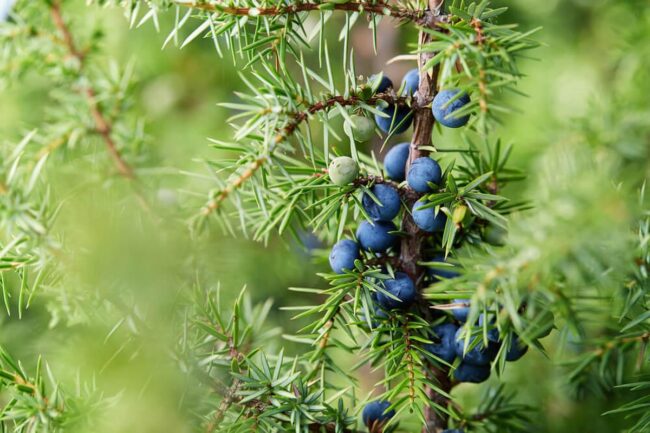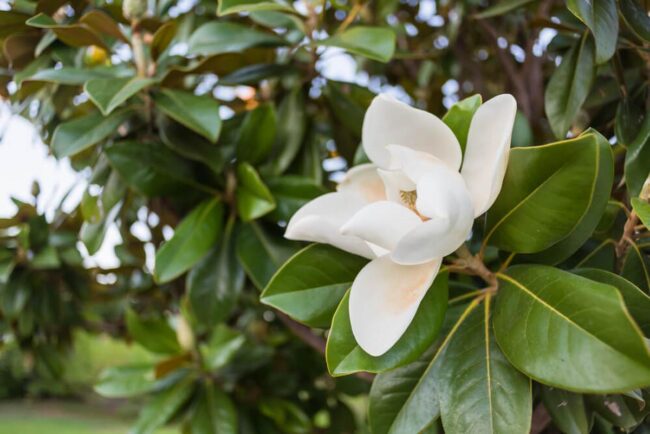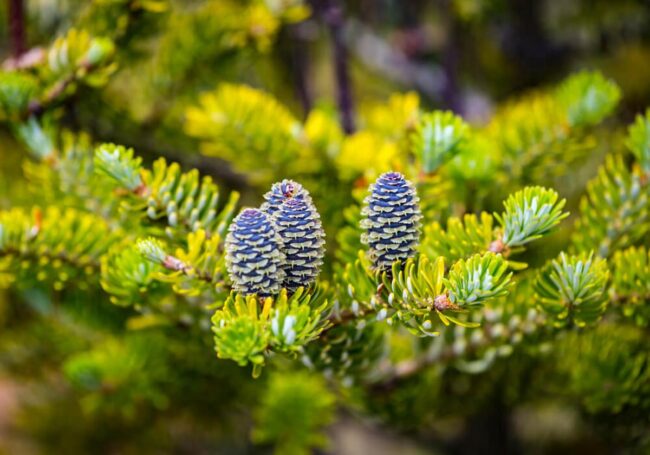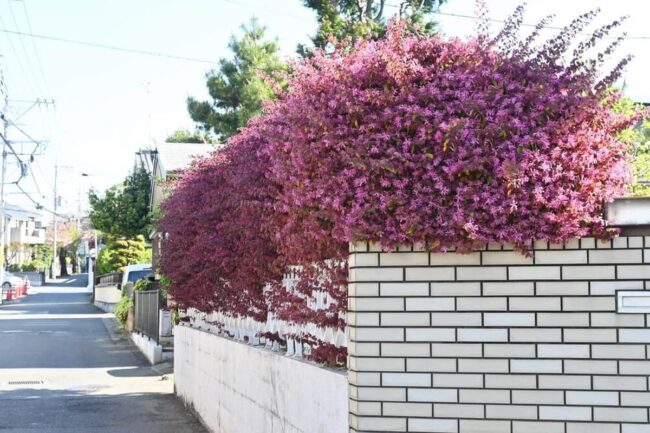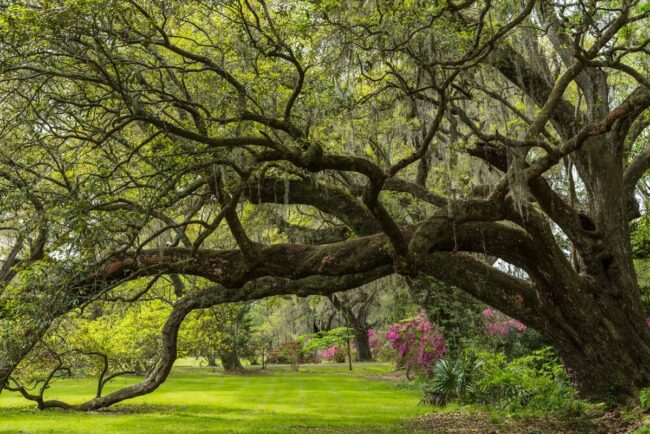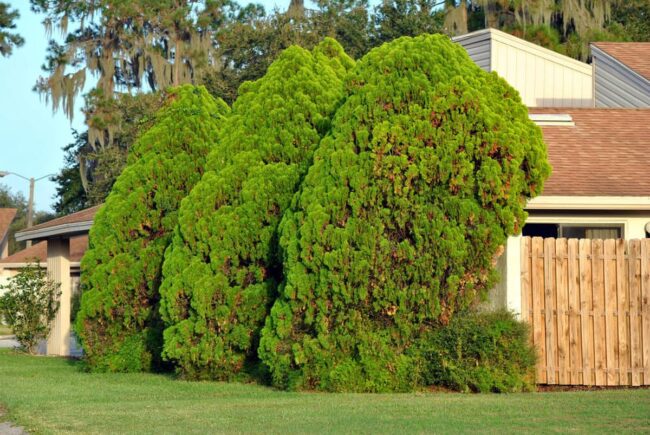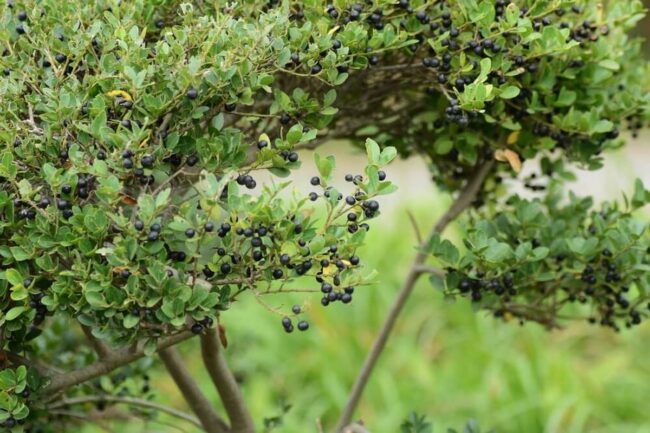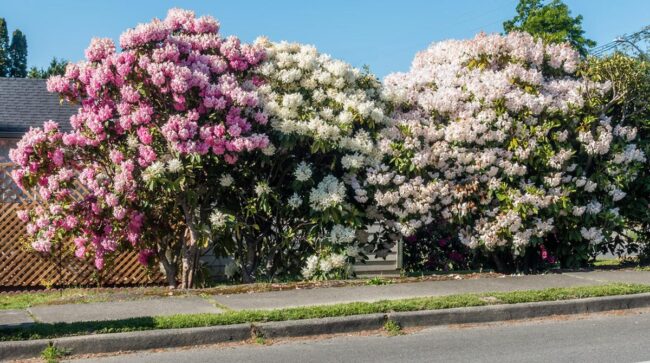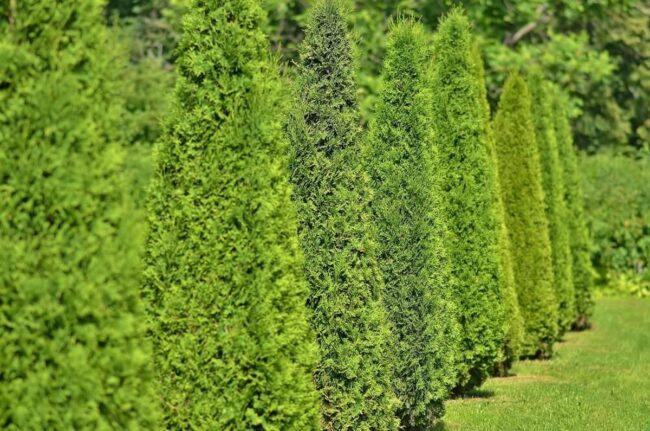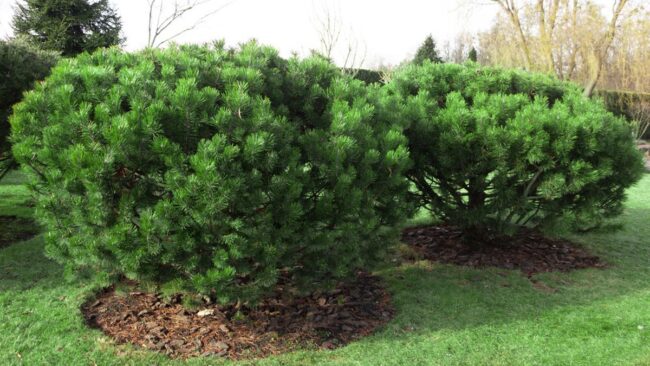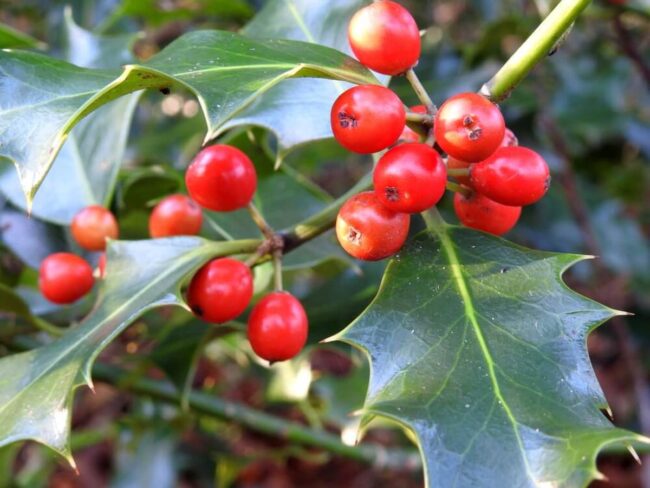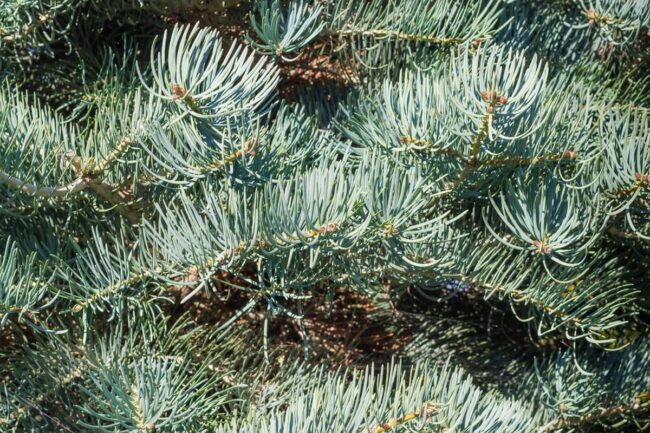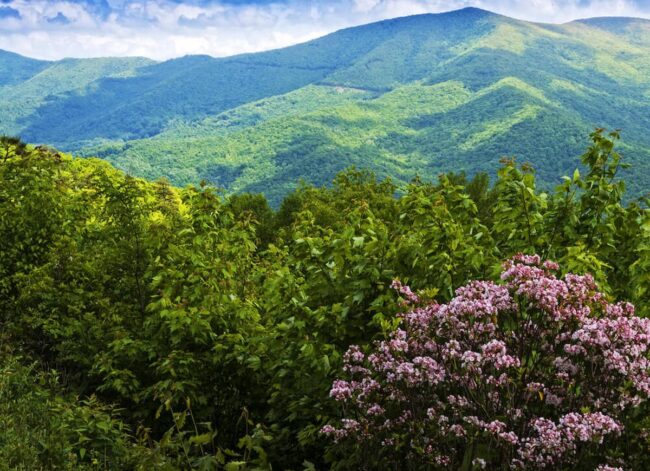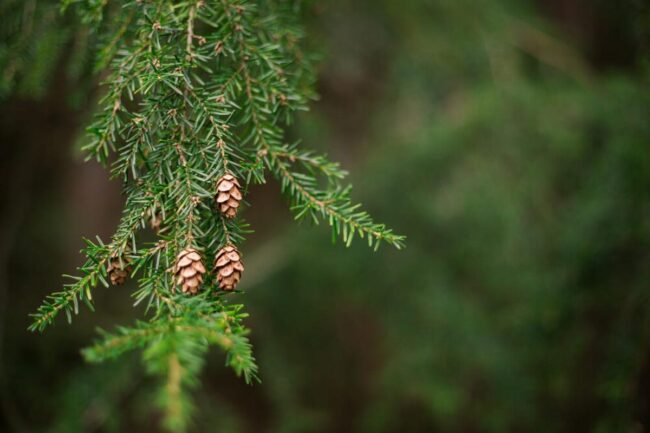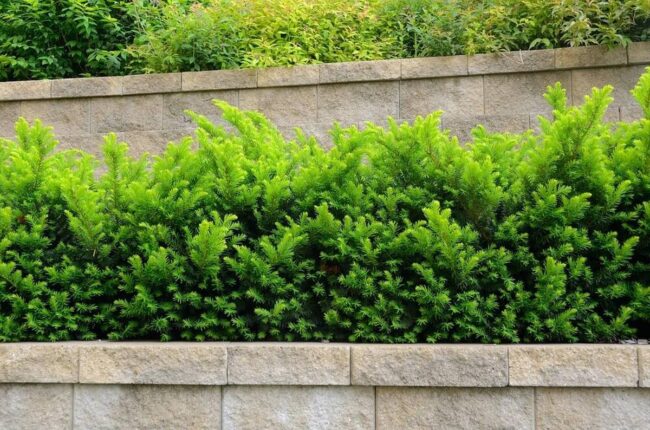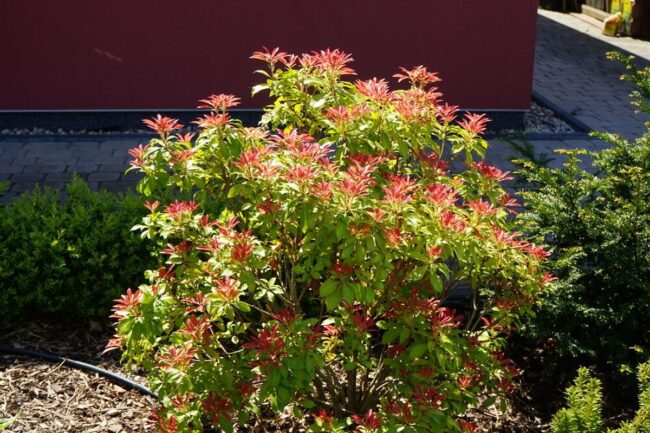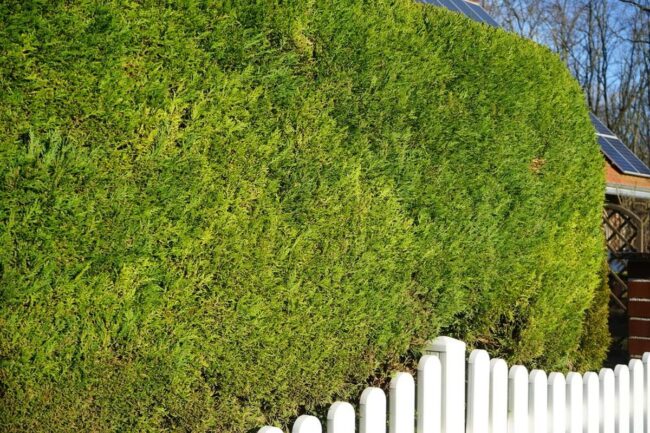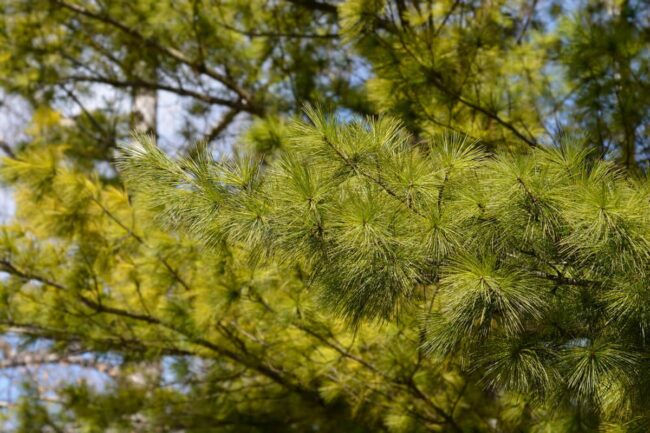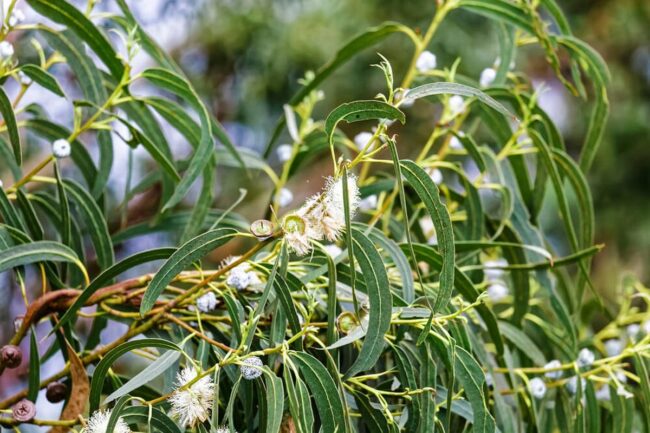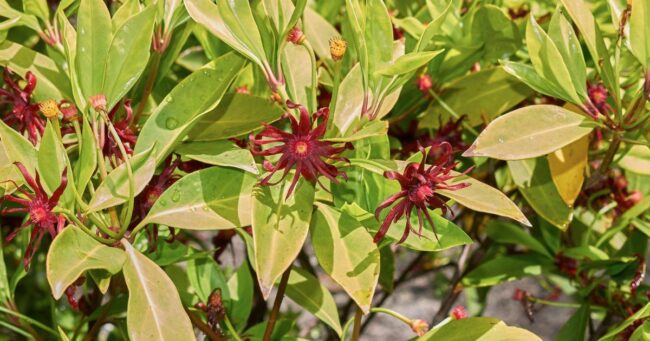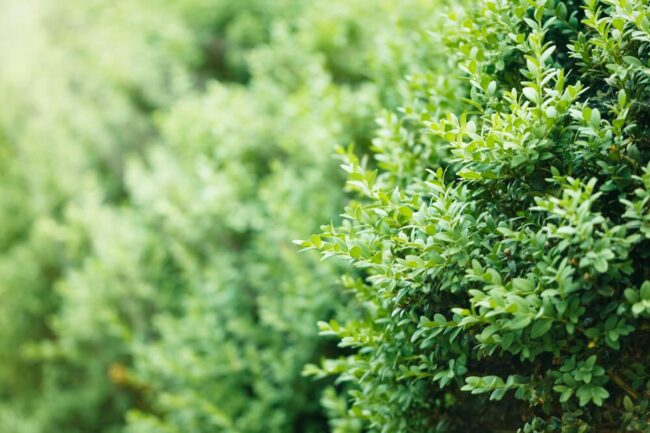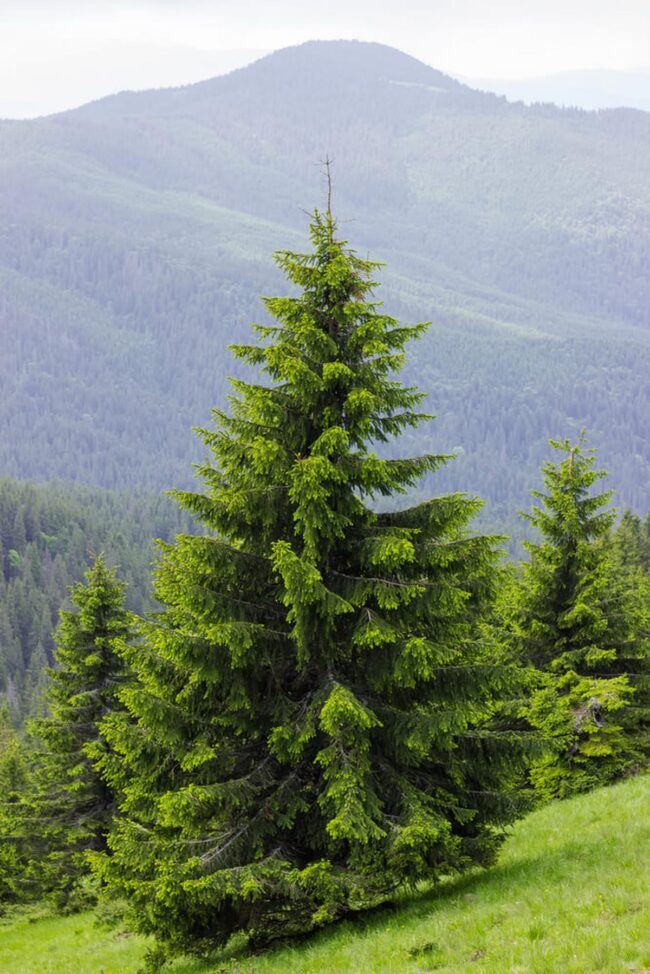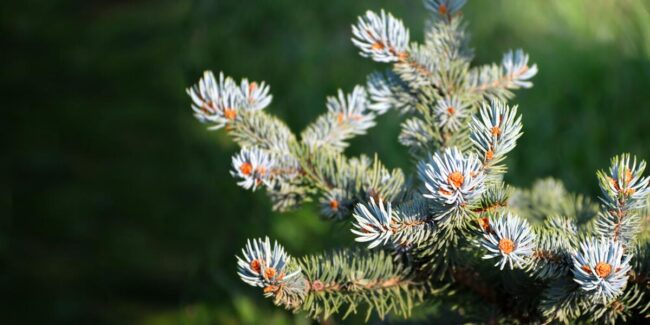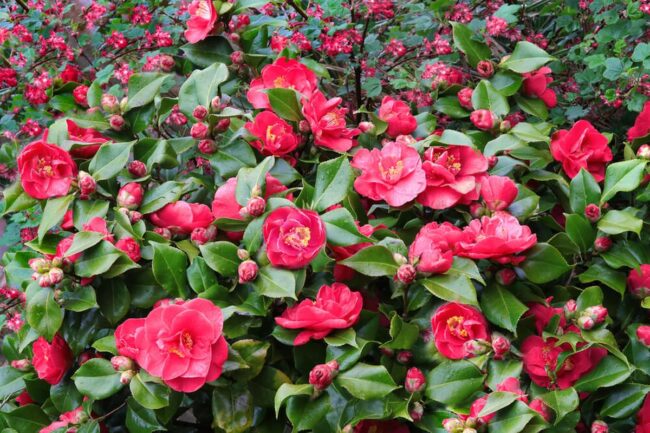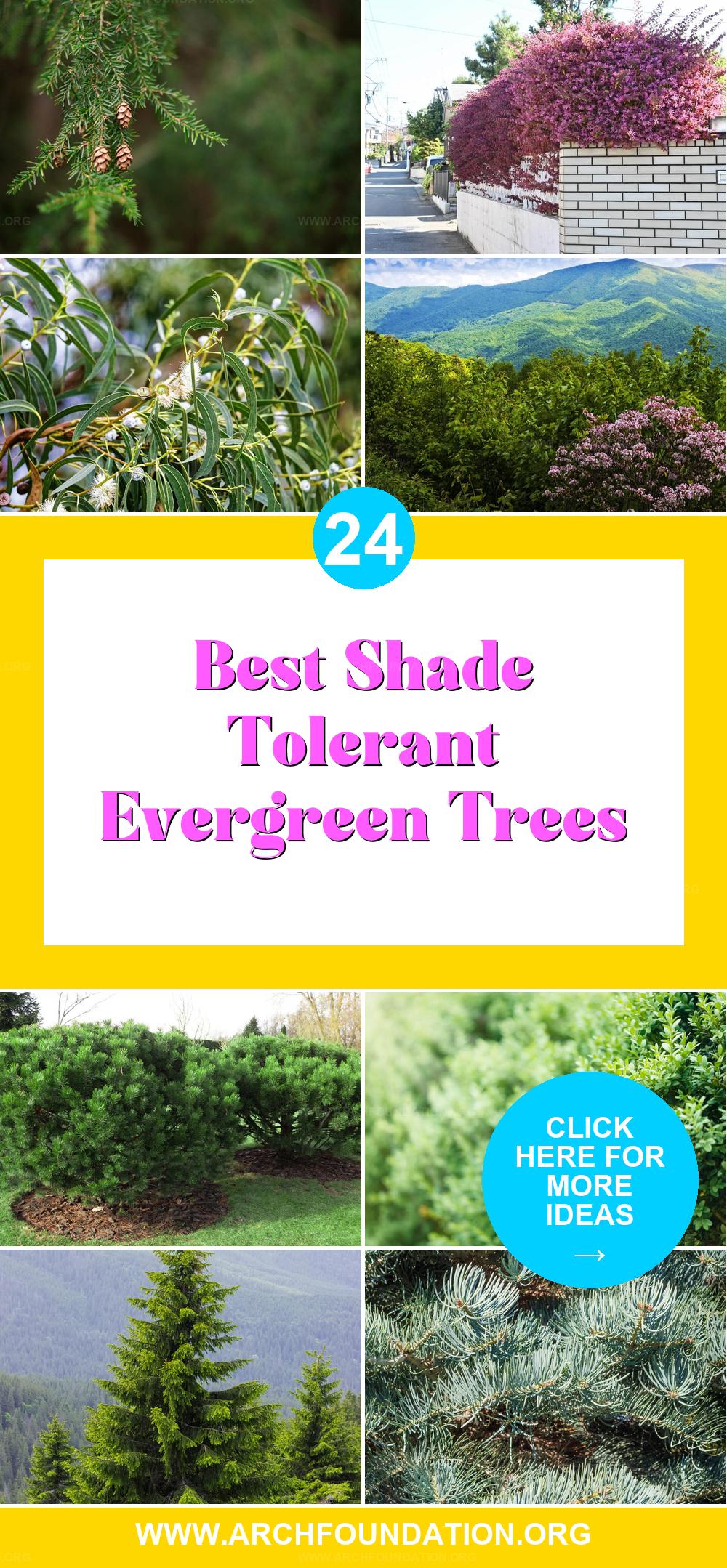24 Shade-Loving Evergreen Trees for Year-Round Foliage
Evergreen trees that thrive in shade are a robust choice for areas with limited sunlight. These steadfast plants maintain their foliage year-round, providing continuous greenery and privacy.
Their adaptability makes them ideal for understory plantings or north-facing gardens. Consider incorporating these evergreens into your landscape for lasting beauty.
Common Juniper (Juniperus communis)
A neat oval shape can emerge from a common juniper with the right pruning techniques. Many people overlook this tree because its name and look seem ordinary at first.
Close examination reveals rough foliage that adds unique texture, creating shadows and depth in your garden. Small, light blue fruits give it an added charm as they hang delicately among the branches.
This plant sometimes grows in a wild and irregular way, which only enhances its character when left untrimmed. The beauty of the common juniper truly shines once you appreciate these details.
Southern Magnolia (Magnolia grandiflora)
Beauty stands out in the southern magnolia tree, capturing attention with its impressive size and lovely features. This magnificent tree can grow up to 80 feet tall and about 40 feet wide under ideal conditions.
Large, creamy flowers bloom throughout its life, with petals that gracefully curve inward. Evergreen leaves add to its charm; they shine brightly in the sunlight and are quite large.
The combination of stunning blooms and glossy foliage makes this tree a favorite for many gardens. You will appreciate how it enhances any landscape beautifully.
Korean Fir (Abies koreana)
Korean fir captivates with its unique features. Bright needles catch the eye, while its cones add to the charm.
These cones grow in clusters and face upward, showcasing a deep blue color that stands out against the lush foliage. A neat conical shape gives this tree a tidy appearance, similar to white fir but even more striking.
You will appreciate how it contrasts beautifully with other evergreens in any landscape. This tree truly adds character wherever it grows.
Chinese Fringe Flower (Loropetalum chinense)
Shaded areas often seem dull to many gardeners. They usually think that these spots lack color and life.
Surprisingly, some trees thrive in the shade and bring beauty to your yard. The Chinese fringe flower stands out as a great option for shaded spaces.
Its canopy fills with bright magenta flowers featuring long spindly petals, creating a stunning display. Additionally, its leaves can appear with a slight purple tint, adding even more charm to your landscape.
Live Oak (Quercus virginiana)
The live oak tree stands out as a key part of the American South's scenery. This impressive evergreen thrives even in partial shade and grows large over time.
Many people think all oaks lose their leaves, but that’s not true for live oaks. With proper care, this tree can provide ample shade due to its wide canopy.
Familiarity with its unique features reveals why it is so valued in southern landscapes.
Eastern Arborvitae (Thuja occidentalis)
The eastern arborvitae stands out as a reliable choice for ensuring privacy in your yard. This evergreen tree requires little care and adapts well to different environments, making it popular among homeowners.
A quick growth rate means you won’t have to wait long for the hedges to develop fully. Besides providing an effective barrier against prying eyes, this tree also helps block wind effectively.
Choosing the eastern arborvitae can enhance your landscape beautifully while offering practical benefits too. Opt for this plant if you desire a low-maintenance solution that delivers on both beauty and function.
Japanese Holly (Ilex crenata)
Starting with its unique features, the Japanese holly stands out with smaller, lighter green leaves that are rounder than those of its American relative. This plant belongs to the same genus as American holly but is a different species altogether.
Notably, you’ll spot a big difference in their fruits; while American hollies produce bright red berries, Japanese hollies have nearly black ones. Exploring both types reveals these interesting contrasts and highlights how diverse nature can be.
Introducing the Japanese version nicely complements what you already know about the American holly.
Rosebay Rhododendron (Rhododendron maximum)
Rhododendrons are a popular choice, with thousands of types available in nurseries. Among these, the rosebay rhododendron stands out as a native species found throughout the eastern United States.
This impressive plant can grow to about 20 feet tall, earning it the title of tree. Large clusters of flowers bloom beautifully on this species.
You will often see it thriving in shaded spots beneath tall trees. Its ability to adapt makes it a favorite for many gardeners looking for unique plants.
Western Arborvitae (Thuja plicata)
A version of arborvitae thrives in the western US, just like its eastern counterpart. Known as western red cedar, this plant shares many similarities with the eastern variety.
Dense evergreen leaves create a lush appearance that brings beauty to any landscape. Cold weather doesn’t harm it much, which makes it resilient in various climates.
Simple care requirements help you maintain its health without hassle. Deer tend to leave this plant alone, adding another layer of ease for gardeners everywhere.
Dwarf Mugo Pine (Pinus mugo)
A dwarf Mugo pine stands out with its unique shape and colors. Thick, dark green needles cover most of this tree’s branches, giving it a fuzzy look.
Bright yellow candles appear at the branch tips, showcasing new growth and adding an eye-catching contrast. This plant thrives in tough conditions and can often be found in rocky areas where other plants struggle to survive.
Its squat form spreads more horizontally than vertically, making it a distinctive choice for garden spaces. Despite its small size, this tree brings character and charm to any landscape.
American Holly (Ilex opaca)
American holly shines throughout the year, not just during winter holidays. This plant thrives in partial shade and can take on a shrub-like shape with careful pruning.
Allowing it to grow naturally transforms it into a stunning tree that can reach heights over 40 feet. Glossy evergreen leaves add beauty no matter its size, while bright red fruits create striking visual interest at all times.
Enjoy having this lovely plant around, as it offers charm every season. A garden benefits greatly from such an eye-catching addition!
White Fir (Abies concolor)
Bright needles define the white fir tree, setting it apart from other evergreens. This tree has an almost perfect conical shape that makes it a classic choice for Christmas celebrations.
Softness characterizes its needles, making them pleasant to touch and easy to manage. Compared to other trees, these vibrant green needles catch attention effortlessly.
Standing out among evergreen options, this shade-tolerant tree brings beauty and charm wherever planted. Choose the white fir for a lovely addition to your home or garden.
Mountain Laurel (Kalmia latifolia)
Mountain laurel thrives in shaded areas, showing a remarkable ability to endure low light. It often struggles with too much sunlight, which can lead to leaf scorch.
This tree makes spring special with its stunning blooms that appear in June. Flowers display unique geometric shapes and come in shades ranging from white to soft pinks.
Such beauty adds charm to any landscape while keeping the environment lively. Growing mountain laurel can be an excellent choice for gardeners seeking vibrant greenery that flourishes under shade.
Canadian Hemlock (Tsuga canadensis)
A beautiful sight, the Canadian hemlock stands out in many areas of the eastern United States and Canada. This plant thrives in forests where sunlight can be scarce.
It plays an important role in nature by offering food and shelter for various wildlife. With its short evergreen needles and a charming pyramidal shape, it adds visual appeal to any landscape.
Tiny cones hang from its branches, adding to its attractiveness as well. Appreciating this unique tree enriches your surroundings with both beauty and ecological value.
Japanese Yew (Taxus cuspidate)
Choosing the right evergreen tree for shade can be tricky. Japanese yew stands out for its ability to thrive in low-light areas.
This plant grows well in both partial and full shade, showing no signs of stress. Its dense leaves make it an excellent choice for hedges, easily shaped to fit your garden's look.
Bright red fruits add a touch of beauty as well, giving you more than just greenery. Reliability and versatility make this tree a popular option among gardeners seeking dependable shade solutions.
Japanese Pieris (Pieris japonica)
Growth reaches over 12 feet, placing the Japanese pieris between a large shrub and a small tree. This plant thrives in shady spots, making it an excellent choice for darker areas in your yard.
Broad evergreen leaves add lushness to the surroundings while providing year-round interest. Unique bell-shaped flowers dangle gracefully in clusters above its foliage, attracting attention during blooming season.
Few plants can boast such adaptability and beauty together.
Lawson Cypress (Chamaecyparis lawsoniana)
Evergreen plants often serve as hedges, but they can also shine as standout features in your garden. The Lawson cypress is one such tree that fits both needs perfectly.
A row of these trees creates a beautiful hedge, adding structure and privacy to your outdoor space. When planted alone, the Lawson cypress showcases its stunning foliage and unique spire-like shape for all to admire.
This versatility makes it an excellent choice for any landscape design.
Eastern White Pine (Pinus strobus)
Fast growth makes the eastern white pine an excellent choice for your backyard or garden. This tree features a single straight trunk topped with an irregular canopy.
Long, slender needles grow in groups of five, creating beautiful foliage that shines when light filters through them. As it matures, this tree transforms into a lovely shade provider.
In its early years, it serves well as a hedge plant too. Whether in the wild or at home, this tree thrives beautifully in various settings.
Blue Gum Tree (Eucalyptus globulus)
Unique in American landscapes, the blue gum tree catches attention with its striking appearance. Originating from Australia, this tree belongs to the Eucalyptus family.
It thrives best in warmer climates and needs hardiness zones 8 or higher for survival. Tolerant of partial shade, it adapts well to different environments.
Rapid growth adds another appealing quality to this remarkable plant. Discovering a blue gum tree brings a touch of the Australian spirit right into your garden!
Anise Tree (Illicium parviflorum)
Focusing on the anise tree's leaves reveals their unique charm. These evergreen leaves have a lovely oval shape and stand tall, catching attention easily.
Young leaves feel soft to the touch and release a strong scent when touched. Below this leafy display, round yellow blooms appear quietly, adding beauty without fuss.
Thriving in full shade makes this tree adaptable and easy-going in various settings. This combination of features creates an attractive addition to any garden space.
Boxwood (Buxus)
Boxwood shrubs shine as some of the most popular evergreen plants. Their ability to thrive in shady spots makes them a favorite among gardeners.
Many specific types of boxwoods exist, and each one offers unique traits. You can easily shape these plants through trimming, giving you plenty of creative options for your garden design.
The Green Mountain boxwood stands out as an excellent choice for areas with limited sunlight. Explore different cultivars to find the right fit for your landscape needs.
Norway Spruce (Picea abies)
Tall and sturdy, the Norway spruce thrives even in partial shade. Its branches hang down gracefully, setting it apart from other spruce trees.
Long cones dangle from these branches, adding to its unique appearance. Darker needles create a rich texture in the tree's canopy that is visually appealing.
This tree excels in cold climates as its shape helps it shed snow easily. Choosing a Norway spruce can bring beauty and resilience to your outdoor space.
White Spruce (Picea glauca)
Full sunlight is the favorite spot for white spruce trees. Even so, they can handle some shade and work well in various situations.
This tree adapts to many soil types, whether the ground is sandy or clay-like. Fast growth makes the white spruce an excellent choice if you want quick privacy in your yard.
You will notice its large size adds a striking presence to any landscape as it flourishes over time.
Camellia (Camellia japonica)
Choosing a camellia means selecting one of the most beautiful small trees available. This tree showcases graceful trunks and a rounded top filled with shiny, broad leaves that stay green all year.
When it blooms, vibrant flowers like roses appear in white, pink, or red shades. Many plant lovers find these features irresistible.
Camellias thrive particularly well in shady spots, making them an excellent option for those areas where sunlight is limited. Whether you want beauty or shade tolerance, this lovely species fits the bill perfectly.

